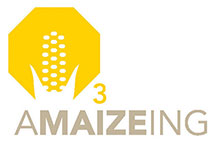
Tropospheric ozone is the most damaging air pollutant to crops. Today, oxidative stress arising from ozone exposure is reducing potential maize yields by up to 10%, which in 2011 would have been valued at $7646 million.
Yield losses to ozone are projected to as much as double by mid-century, and there is little potential for adaptation to rising ozone concentrations through altered crop management practices. Therefore, the only solution to current and future ozone-induced yield loss is development of ozone tolerant maize through breeding and/or biotechnology.
Elucidating the genomic basis for ozone tolerance in maize has broad implications for understanding of oxidative stress and signaling due to cross talk between gene networks responsive to ozone, abiotic stress and biotic stress.
The availability of genomic and genetic tools for maize make it an ideal model in which to explore oxidative stress in C4 species, a group whose response to oxidative stress is poorly understood relative to its enormous importance for agricultural food and fuel production as well as natural ecosystem function. This project aims to couple these tools with the unique capabilities of Free Air Concentration Enrichment (FACE) technology in order to identify genes and processes that underpin oxidative stress susceptibility and tolerance.



